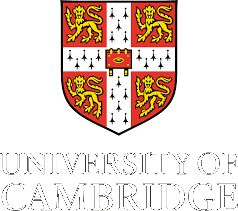Moliant i Ddewi (Dafydd Llwyd Mathafarn)
edited by Eurig Salisbury
Manuscripts
The 28 manuscript copies of this poem fall into two groups, namely group A and X1. The reading in group A for line 13 is superior to X1, and the same is probably true for lines 4, 5, 7, 9, 31 and the second half of line 42, as well as the order in lines 19–21 (see the notes). The fact that the text in X1 was technically sound in terms of cynghanedd suggests that it was the work of a poet or declaimer who had purposefully refashioned parts of the original poem. All but one of the textual variations noted above are found in the first third of the poem, in which the poet recounts the life of St David. This part of the poem, where the poet uses two englyn metres and makes extensive use of narrative, seems to have been more susceptible to creative manipulation than the dense vaticinatory content of the cywydd llosgyrnog verses in the second part.
X1 contained a complete text of the poem, but one verse of cywydd llosgyrnog was omitted from every manuscript branch that derived from it except X3. It is likely that more than one scribe, whether copying from a written source or from memory, made the same error, namely jumping forward from llawer at the beginning of line 80 to the same word at the beginning of line 83. The poem was wrongly attributed to Dafydd Nanmor in X2, possibly because the ascription was difficult to read or partly lost in the source. True to form, the generally inconsistent texts of Llywelyn Siôn show signs of meddling (cf. ll. 15n, 27n), either by Llywelyn’s own hand or perhaps an earlier scribe (the edition refers to X4 when discussing his manuscripts in the notes). Transcriptions are provided from two of his manuscripts, namely C 2.619 and Llst 47.
The manuscripts of group A are less homogenous that those that derive from X1, especially in terms of the number of missing lines and variations in line order. They probably derive from more than one written source. A few errors in Bodley Welsh e 7 (ll. 9, 74), C 3.4 (ll. 1, 31), Llst 173 (l. 9) and Pen 77 (ll. 50, 71) seem to have occurred during transcription, which strongly suggests that these four texts were copied from other manuscripts. (Furthermore, the fact that two substantial sections were omitted in Bodley Welsh e 7 suggests that part of the page in its source was torn or impossible to read.) At least two texts from group A seem to be copies of texts that were recorded from memory, either after the scribe had read the poem in a manuscript source or after hearing it performed. This would explain why so many individual lines and verses are missing from C 3.4 (as well as a number of damaged readings) and Stowe 959 (where the first third of the poem is missing). A handful of similar readings (see ll. 50n, 89n and 95n; cf. ll. 25n, 40n) are found in some of the less incomplete texts of group A: LlGC 3077B (missing ll. 31–4, 41–3), Llst 120 (missing ll. 21–2), Llst 173 (the only complete text, but ll. 77–9 and 80–2 are exchanged and two damaged lines appear after l. 22), Pen 77 (missing l. 54). It seems that these four manuscripts derive ultimately from the same source (X6), which contained a complete text of the poem that cannot be adequately restored because of the large number of differences between the four manuscripts.
As a rule, the edition follows the manuscripts of group A where their texts are in agreement. Where they differ, the edition often follows whichever reading is also found in X1, if there is certainty as to the reading in that lost manuscript. The stemma reflects the position of each manuscript in relation to the others, as far as it is possible, but some readings remain difficult to account for in this format (cf. Stowe 959 in l. 45n and X3 in l. 50n).
BL 14892 contains no more than a handful of lines, and only the first englyn was recorded in C 2.6 and LlGC 96B. Walter Davies’s source in LlGC 1641B was a lost manuscript that belonged to William Maurice of Llansilin (X7) and perished either in a fire in London in 1810 or in a fire at the Wynnstay library in 1858 (RepWM).
Line order: BL 14887, Bodley Welsh e 6, C 2.619, C 5.44, LlGC 970E, LlGC 6499B, Llst 47 1‒79, [80‒2], 83‒98; Bodley Welsh e 7 1‒40, [41‒58], 59‒67, [68‒76], 77‒86, [87], 88‒98; C 3.4 1‒12, 23‒6, 13‒22, 27‒41, [42], 43‒56, 58, 57‒69, [70], 71‒2, [73], 74, [75], 76‒9, [80‒5], 86‒8, [89], 90‒8; LlGC 3077B 1‒30, [31‒4], 35‒40, [41‒3], 44‒98; Llst 120 1‒20, [21‒2], 23‒98; Llst 173 1‒22, [+ two lines], 23‒76, 80‒2, 77‒9, 83‒98; Pen 77 1‒53, [54], 55‒98; Stowe 959 [1‒34], 35‒43, [44], 45‒67, [68‒70], 71‒6, [77], 78‒9, [80‒2], 83‒4, [85], 86‒98.
Title
Bodley Welsh e 7, LlGC 3077B, Pen 77 and X5 all contain variations on ‘Praise to St David’. The most interesting title appears in a later manuscript, LlGC 1641B Awdl Dewi Sant / Sef gweddi arnaw er gwared Cymry yn eu hadfyd ac i frudiaw gwaith Fosworth ‘An awdl to St David, namely a prayer to him to save the Welsh people in their hour of need and to foretell the battle of Bosworth’ (further, see the introductory notes).
The manuscripts
Ba 401, 200‒4 (X111, middle of the 17c.)
Bodley Welsh e 6, 274‒9 (John Jones Gellilyfdy, 1604)
Bodley Welsh e 7, 39v‒41v (unknown, 16c./17c.)
BL 14878, 53r (Thomas ab Ieuan, 1692)
BL 14887, 87r‒88v (unknown, 16c./17c.)
BL 14892, 107r (William Bodwrda, c.1644)
BL 31085, 125v (Owain Myfyrand others, 18c./19c.)
C 2.6, 130 (unknown, c.1608‒12)
C 2.619, 1‒4 (Llywelyn Siôn, c.1586)
C 3.4, 102‒4 (Elis Gruffydd, c.1527)
C 5.44, 8r (Llywelyn Siôn, 1613)
LlGC 96B, 51 (John Rowlands, 19c.)
LlGC 668C, 18 (William Jones, 19c.)
LlGC 970E, 2 (Llywelyn Siôn, c.1613)
LlGC 1641B, 70 (Walter Davies, 1793)
LlGC 3077B, 413‒15 (unknown, c.1642‒4)
LlGC 5474A, 729 (Benjamin Simon, 1747‒51)
LlGC 6499B, 496‒500 (Watcyn Clywedog, c.1654‒5)
LlGC 19907B, 217r‒18v (Robert Vaughan, first half of the 17c.)
Llst 47, 32‒6 (Llywelyn Siôn, 16c./17c.)
Llst 118, 335‒7 (unknown, 1612‒35)
Llst 120, 89ar‒90r (Jaspar Gryffyth, c.1597‒1607)
Llst 133, 385r (Samuel Williams, c.1712)
Llst 136, 24 (unknown, first half of the 17c. (<1637))
Llst 173, 89‒93 (unknown, middle of the 17c.)
Pen 77, 290‒3 (Thomas Wiliems, 1576)
Pen 86, 308 (Richard ap Siôn, c.1572‒1620)
Stowe 959, 115v, 197r (unknown, 16c./17c.)


